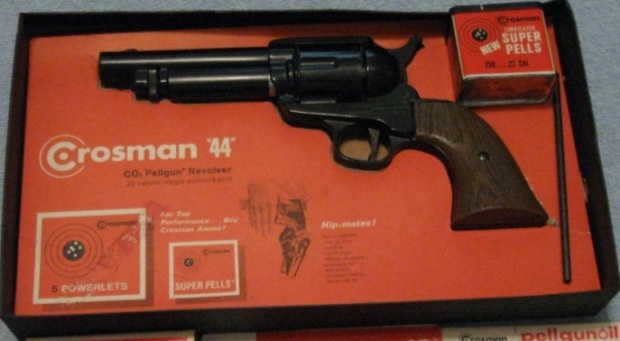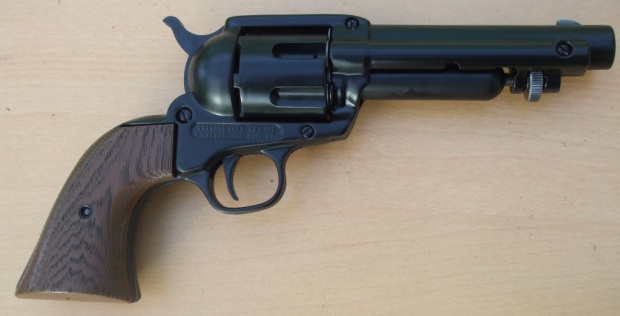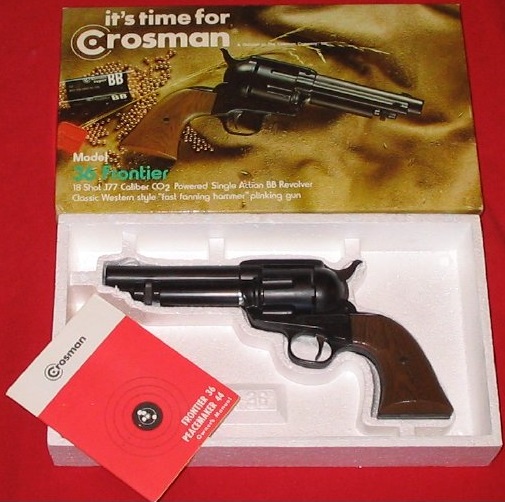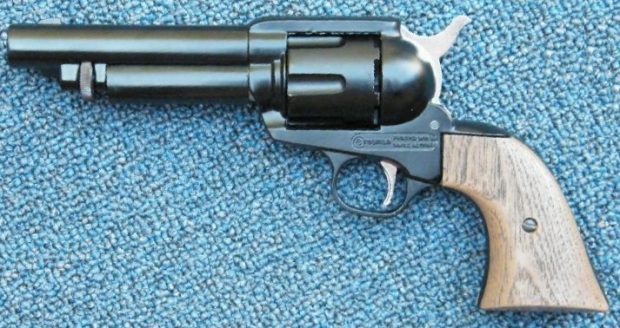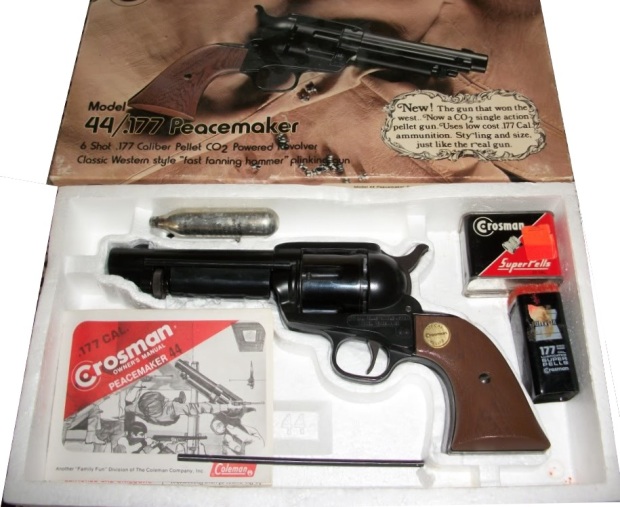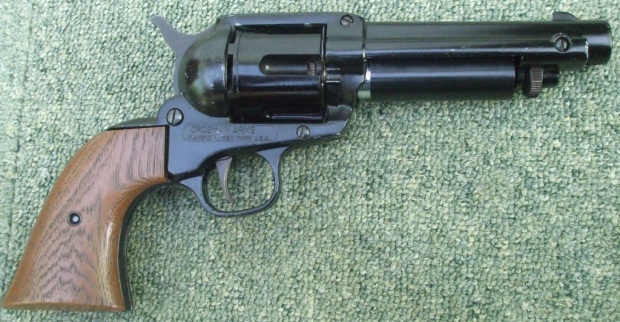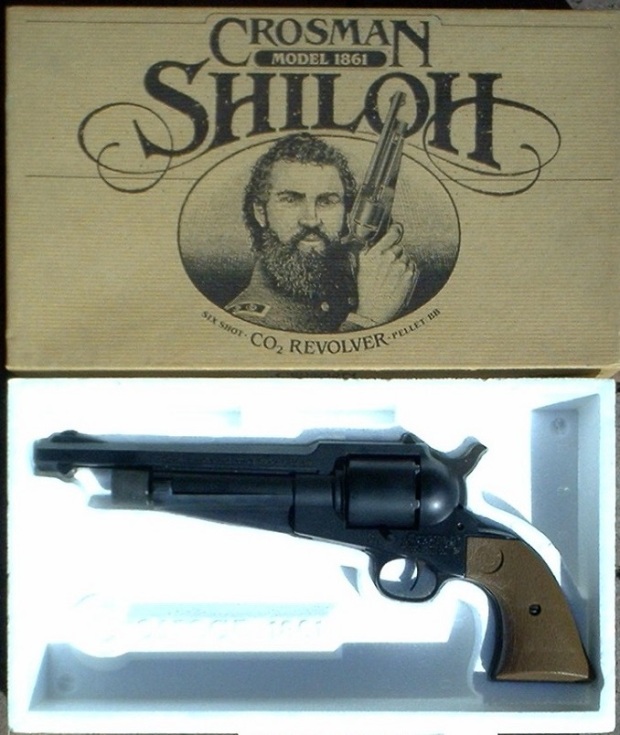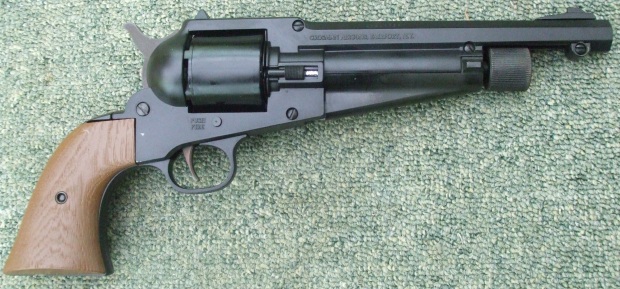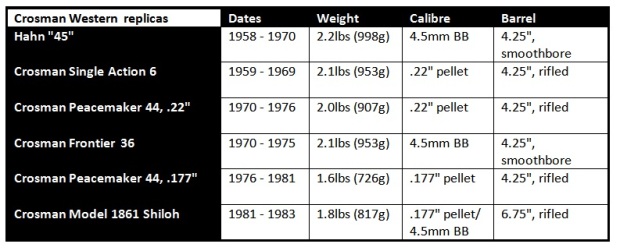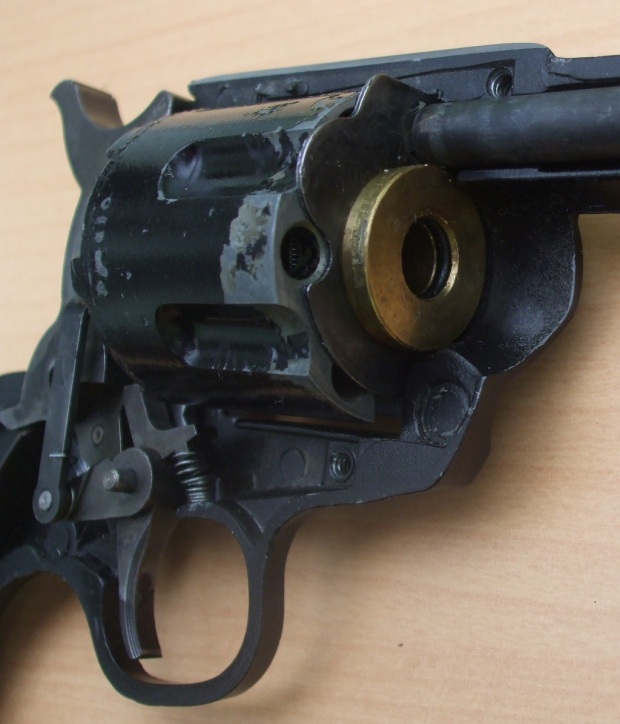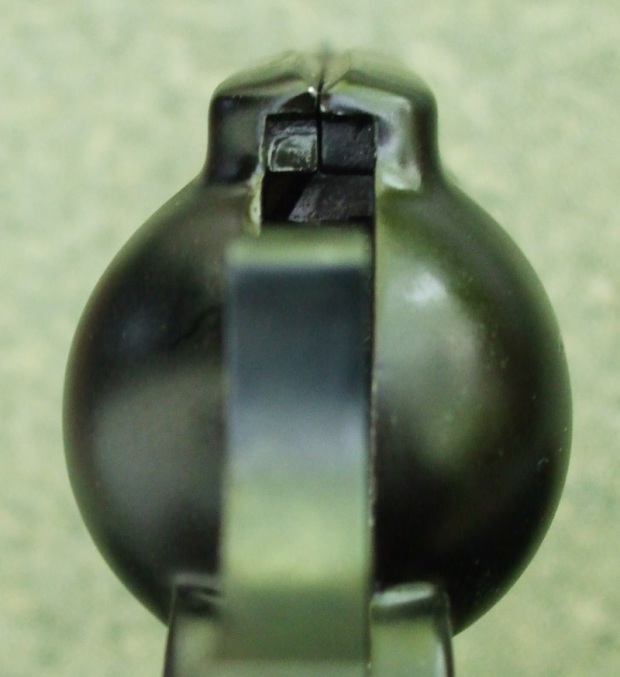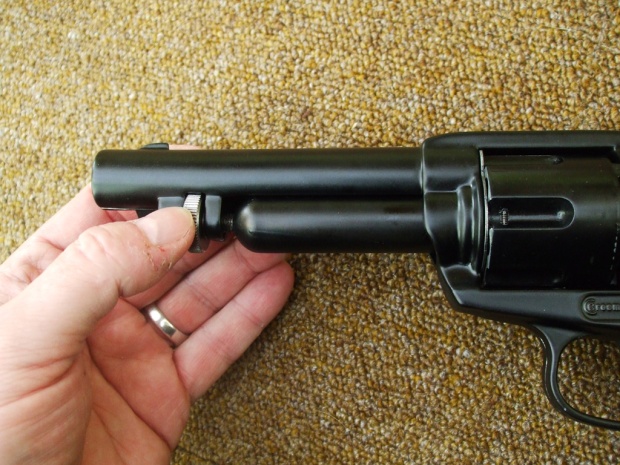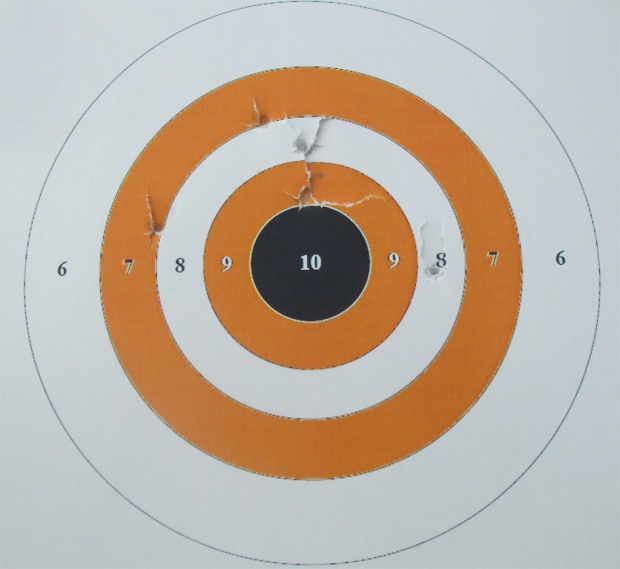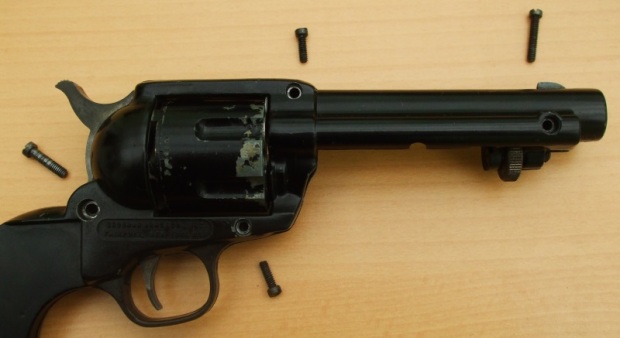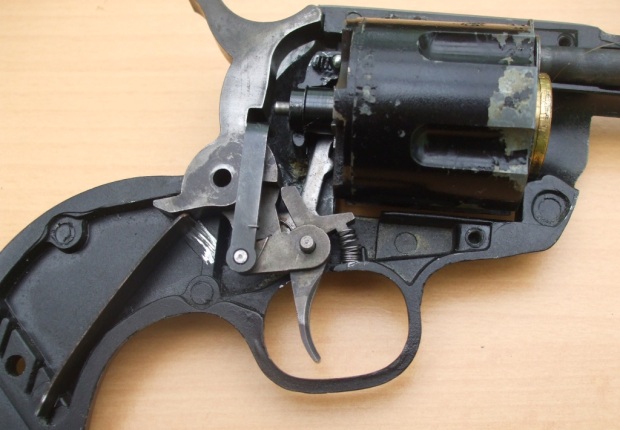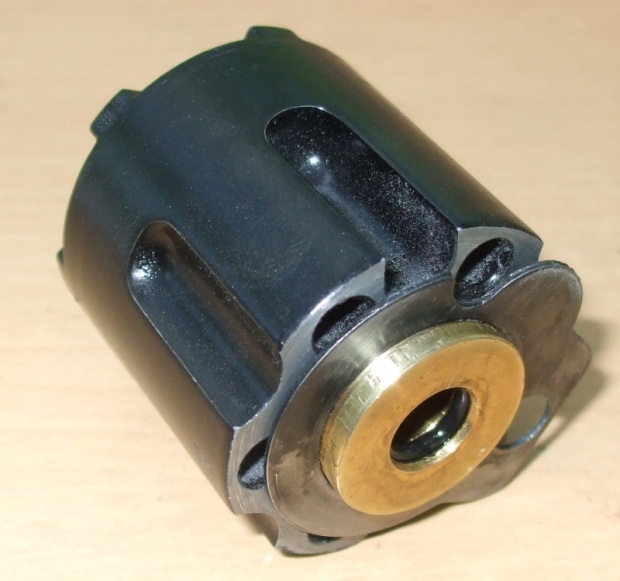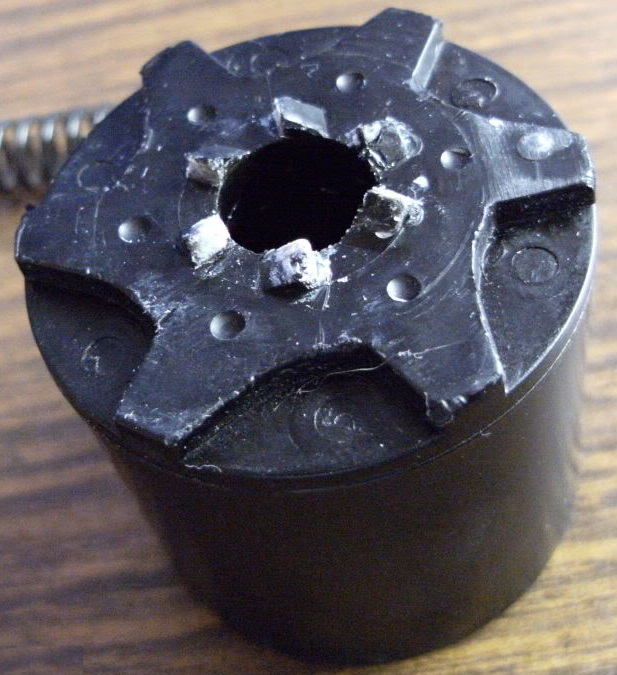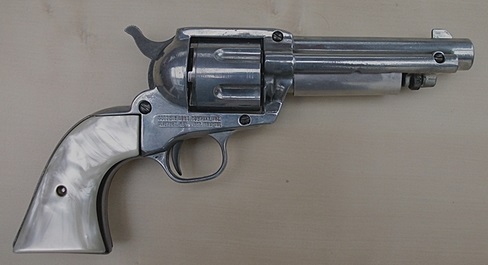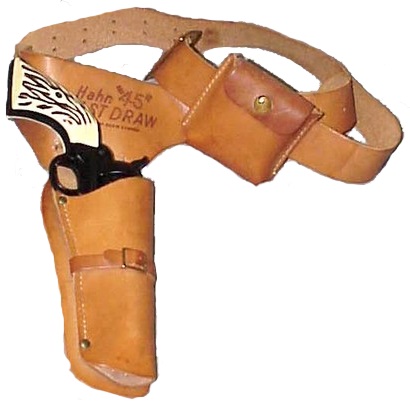
There is an ongoing debate amongst some replica air gun enthusiasts about airsoft weapons versus “real” air pistols. Many replica air pistol fans regard airsoft pistols as little more than inaccurate, underpowered and expensive toys. While in the past there may have been some truth in this, improved designs and advances in technology mean that newer airsoft pistols handle and shoot very well indeed. Personally, I feel that many modern airsoft pistols should be regarded as air weapons which simply happen to use a different calibre of BB.
So, I’m going to review here the KWA HK45 which, IMHO, is a very fine replica air pistol which stands comparison to other replicas of any calibre.
Real steel background
The HK45 is an evolutionary development of the Heckler and Koch USP (Universale Selbstladepistole: “Universal Self-loading Pistol”) and is functionally very similar to that weapon. Chambered for the .45 ACP round, the HK45 has a distinctive polygonal O-ring barrel, replaceable grip backstraps, improved ambidextrous controls and a standard picatinny accessory rail. To keep the grip within comfortable ergonomic limits, the HK45 magazine holds just ten of the fat .45 ACP rounds (compared to 15 rounds in the 9mm variant of the USP).

The HK45 was originally developed for the U.S. Military Joint Combat Pistol (JCP) and Combat Pistol (CP) programs which were intended to find a replacement for the ageing Beretta M9. Both programs were cancelled in 2006 before a new pistol could be selected but HK continued with commercial development of the HK45, targeting the military, law enforcement and personal defence markets. The HK45 was released in 2007.
The HK45 is the first HK pistol to be assembled (from U.S. and German made components) at the Heckler and Koch manufacturing facility in Newington, New Hampshire, USA.
The KWA HK45
KWA is a Taiwanese company which began as an industrial design specialist in the automotive and power tools sector. However, they moved into airsoft design and manufacture in the late 1990s and became Original Equipment Manufacturer (OEM) for several well-known airsoft distribution companies before starting to offer products under their own name in 2006. KWA has a long association with Japanese airsoft design and R&D company KSC. KWA manufacture airsoft replicas which are branded as KSC products in some countries. KWA have a reputation for producing very high quality airsoft pistols which are also used as training weapons by some law enforcement agencies.
Umarex hold the worldwide exclusive rights to the HK trademark and the exterior design copy license for the HK45. On the packaging for this pistol the words “Powered by Umarex” are prominently featured, though my understanding is that Umarex have no involvement in the design or manufacture of this replica beyond granting a license to KWA.
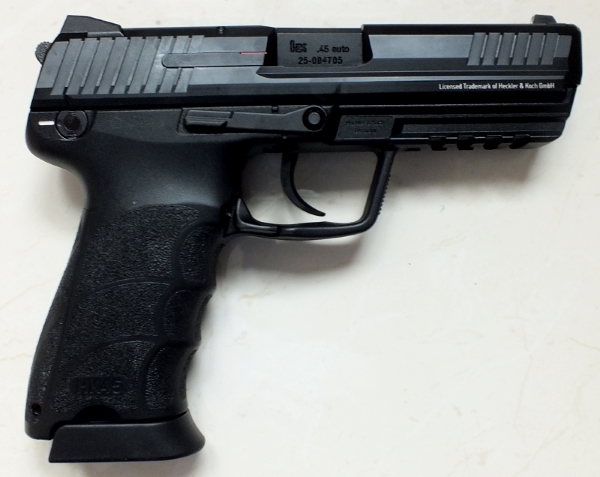
The KWA HK45 is a gas powered, blowback replica with a metal slide and fittings and a polymer frame and grip. It is a fully licensed replica featuring accurate H&K trademarks and markings. The KWA HK45 features the NS2 internal gas delivery system, a KWA patented design. NS2 utilizes an advanced lightweight composite gas piston with a two-stage internal expansion chamber that delivers gas more efficiently and more consistently. KWA claim that this increases cycle rate and provides a crisp, powerful blow back action as well as increasing muzzle velocity and providing more consistent shot-to-shot performance. The magazine is an integral part of the system and is a one-piece construction milled from solid alloy billet. NS2 is functionally identical to System7 which is used on some KSC branded pistols.

Packaging and presentation 3/5

The HK45 is provided in a rather nice card box with HK and Umarex markings on the top. The only KWA marking you’ll find on the outside of the box is a discreet logo on one of the end panels, and even there it shares space with HK and Umarex trademarks. Inside, there is a large KWA tag attached to the replica. The box features hard foam with cut outs to fit the pistol and accessories.

Alternative backstrap, hop up tool (top) and lock-out key
The KWA HK45 comes with a single magazine, a small bag of unidentified BBs, an alternative replacement backstrap, a hop-up adjustment tool and a lock-out key. The lock-out key engages with an opening in the mag well. With the hammer down, turning the key through 90° disengages the hammer. KWA claim this allows “safe storage” – I’m not sure this is really relevant to an airsoft replica, but it’s impressive that it fully replicates the lock-out system used on the original.

Using the lock-out key
Visual accuracy 9.5/10

Real HK45 (left), KWA HK45 (right). Probably.
The KWA HK45 is visually identical to the original. Every contour of the frame, slide and grip are accurately modelled and all controls are accurately placed and modelled. All markings on the real weapon are replicated including the “H&K .45 Auto” markings on the inner barrel. Even the tiny green O-ring on the barrel of the original is present on this replica. The only thing that distinguishes this replica from the original is the text “Licensed Trademark of Heckler & Koch Gmbh” in white lettering on the lower right front of the slide. Other than this, it’s virtually impossible to tell the original from the replica.

Barrel O-ring
In terms of visual accuracy, this is about as good as it gets for replica pistols.
Functional accuracy 14.5/15
Many recent KWA pistols are intended as training aids for law enforcement operatives, so it’s no surprise to find that the functional accuracy of the KWA HK45 is extremely close to that of the original. All controls here work as per the original. The slide release and magazine release are ambidextrous as per the original. The safety/decocker lever is provided on the left side of the fame only (again, as per the original) though markings are provided on the frame to allow fitting a right-side lever. Looking at how closely the KWA HK45 matches the real weapon (both internally and externally) I wouldn’t be surprised if the HK parts which can be used to convert the safety/decocker lever to the right side of the frame would fit on the replica, which would make it one of the very few replicas to be truly ambidextrous.

The only thing that I can see which doesn’t work on the replica is the ejector pin. On the real weapon, the ejector pin projects slightly when a round is in the chamber and the upper surface of the pin is painted red to act as an external visual loading indicator. The red paint is present on the replica, but the ejector pin is fixed in place.

The KWA HK45 field strips as per the original – the magazine is removed, the slide is moved back until a cutout is aligned with the combined slide release/locking pin on the left. The pin is then pushed out from the right side and removed, and the slide can be pushed forward off the frame. It’s a very similar setup to that used on the venerable Colt 1911.

Removing the slide locking pin
This replica loads, shoots and strips in precisely the same way as the original. Other than for the addition of a moving ejector pin, it’s difficult to see how a replica could be more functionally accurate.
Shooting 34/40
The KWA HK45 is loaded by filling the full size magazine with gas and BBs. Gas filling is done without drama or leaks. The magazine follower locks down and the mag double stacks to hold up to 29 BBs. I found this replica worked well with 0.2g BBs. The slide is racked for the first shot, which pushes a BB into the chamber and cocks the hammer for single action. The HK45 feels particularly good in the hand – balance is very good and it points naturally. Heckler and Koch spent a great deal of time perfecting the ergonomics of the original weapon and this is apparent when using the replica.

Hop-up is adjusted using the supplied tool which engages with a toothed adjustment wheel round the barrel breech. Adjustment is precise, but the slide has to be held half-way back while this is done – with the slide locked back, the tool can’t reach the adjustment wheel.

Using the hop-up adjustment tool
The trigger pull in single action is crisp, light and consistent. In double action it is longer, but still fairly light and consistent. The three white dots on the non-adjustable sights make lining up the target simple. Blowback is particularly crisp and strong and the pistol fires with a satisfying crack. I have had no misfeeds or failures to fire though I have seen other owners reporting occasional double feeding of BBs when using this replica. The magazine holds gas for more two weeks without appreciable leaks and it’s possible to fire two full magazines from a single fill, though power drops noticeably for the last few shots. The slide locks back when the mag is empty.

Six shots, six yards, 0.2g BBs, note single flyer at lower edge of green circle
0.2g BBs hit the target hard at 6 yards and penetration is good – this knocks chunks out of a backstop which some other airsoft pistols just dent. Accuracy is good. I regularly get groupings around 1″ – 1¼”at 6yds though with occasional flyers which hit anything up to 2½” from the point of aim. At 6yds, best accuracy seems to be obtained using 0.2g BBs.

Overall, this is one of my favourite airsoft pistols for target shooting. It feels good and shoots well and reliably. Groupings are generally good, though as noted with flyers approximately every ten shots. My HK 45 is still fairly new, so it’s possible that this may improve with further use. In terms of accuracy and consistency at six yards, this is comparable with many pellet shooting replicas and better than most steel BB shooters.
Quality and reliability 13/15
The weight of the KWA HK45 is good and is very close to the weight of the real weapon. One slight disappointment is that a fair portion of this weight comes from the magazine which is machined from solid billet, and with the magazine removed the pistol feels notably light. However, most of the time you’re using this pistol the magazine will be in place, so this isn’t a major problem and the KWA HK45 does feel very well balanced.
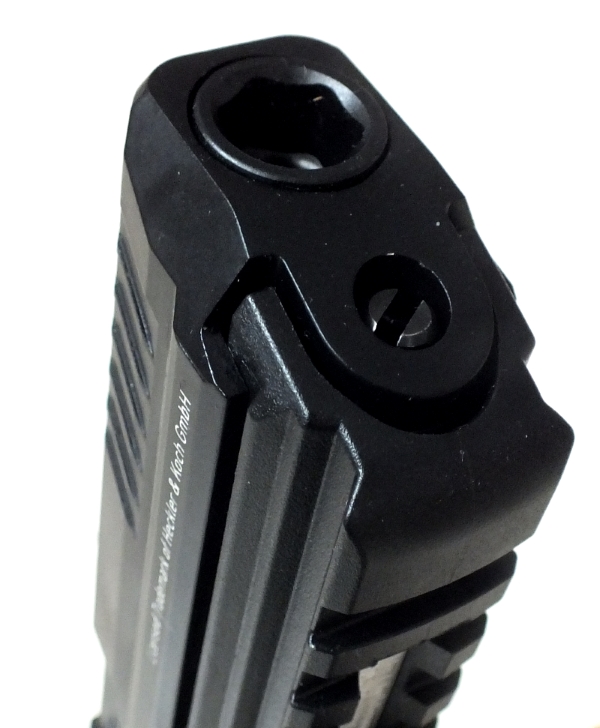
The finish on the metal parts of the KWA HK45 seems well applied and durable – my pistol is showing no signs of wear. The polymer parts seem robust and the textured finish feels good.
The only slightly suspect area is the outer barrel. This is made of lightweight plastic, and some owners have reported that this can crack with extended use. The pistol will continue to shoot if this happens, but it’s a surprising flaw in what otherwise seems to be a very well made replica. I have also read reports of premature wear on the slide locking catch of this replica, but my pistol seems unaffected.
Overall Impression 13/15
This a high quality, nicely finished replica which handles and shoots well. Like the original, it’s ergonomically very good indeed with fine balance and a slim, contoured grip. Visually it’s almost indistinguishable from the original weapon. It has good weight, feels good to shoot and the crisp blowback helps to replicate the recoil of the real weapon. It’s accurate enough for satisfying target shooting, though the occasional flyer BBs are something of a mystery.
Overall, this feels like a quality replica. No surprise then that it’s also a little more expensive than most other Taiwanese offerings.
Conclusion
This is a hefty and accurate replica pistol which shoots as well as it looks. Forget that it uses green gas and shoots plastic BBs – this is as satisfying as any replica air gun I have tried. I’d recommend anyone who thinks that airsoft pistols are toys to try one of these. Don’t think of it as an airsoft pistol – it’s simply a very fine replica air pistol indeed. If you are considering dipping your toe in the world of airsoft, this would be a good place to start.

Given KWA’s involvement in producing airsoft pistols that are suitable for use as training tools, it should be no surprise that this looks, operates and handles identically to the firearm it replicates. However, it’s also reliable, well-made and accurate and powerful enough for satisfying target shooting. If the higher than average price doesn’t put you off, I really can’t think of any reason you wouldn’t want to add one of these to your replica collection.
Total score: 87/100
Cons
A little more expensive than the average airsoft replica pistol.
A large part of the overall weight comes from the magazine.
Pros
Spot-on visual and functional replica.
Has enough power and accuracy to be a satisfying target shooter.
Seems well made and finished and my HK45 has been completely reliable.
Related pages:

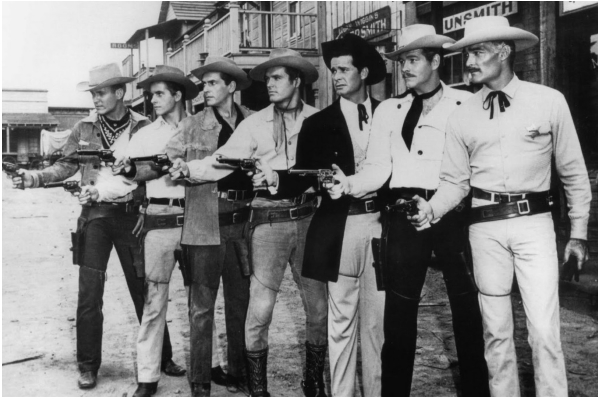
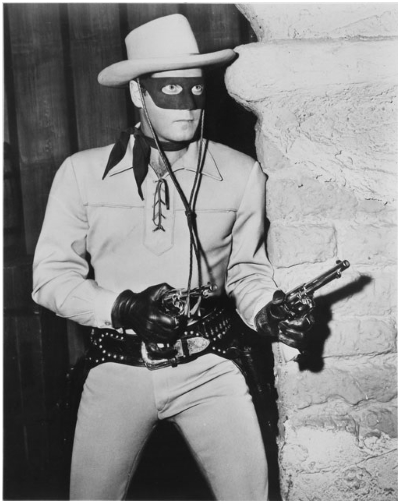
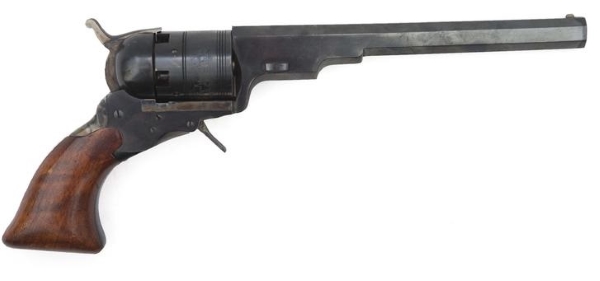
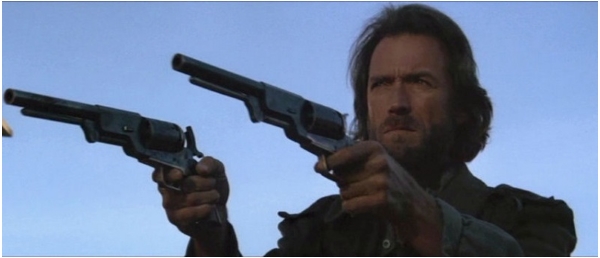
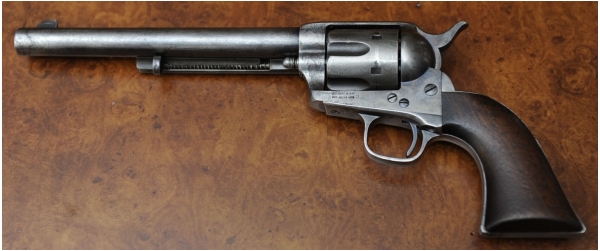
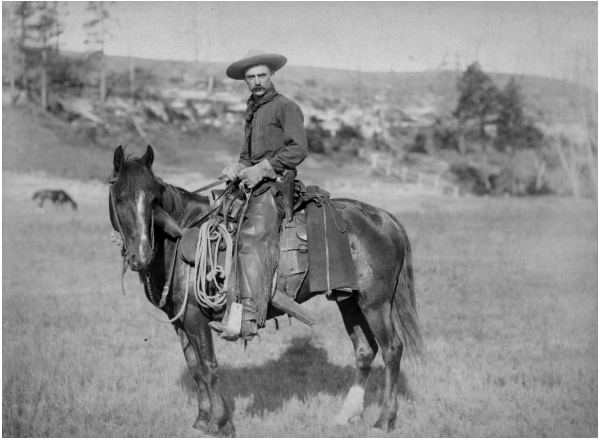
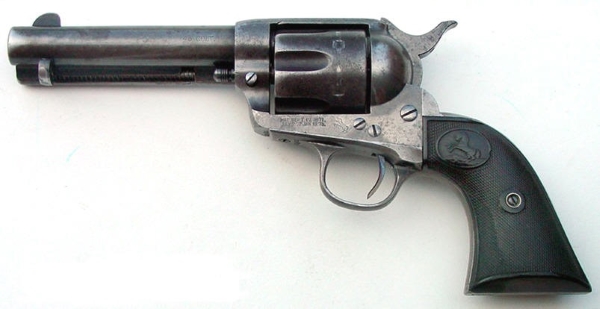
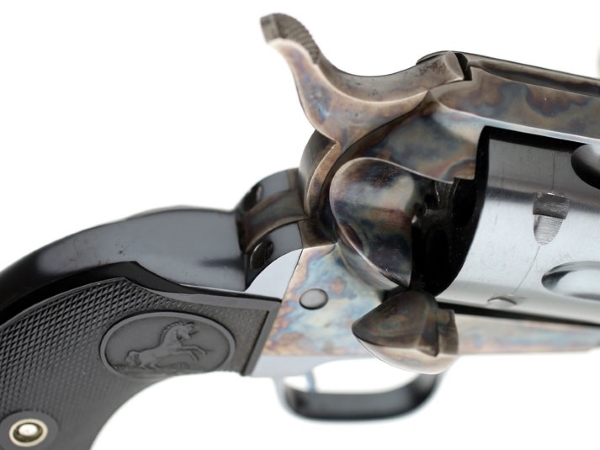
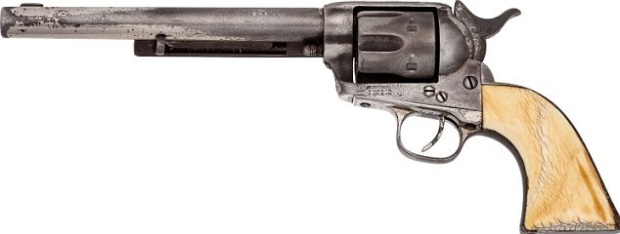
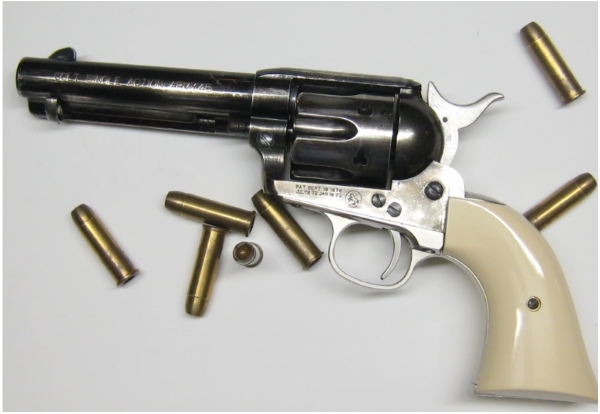
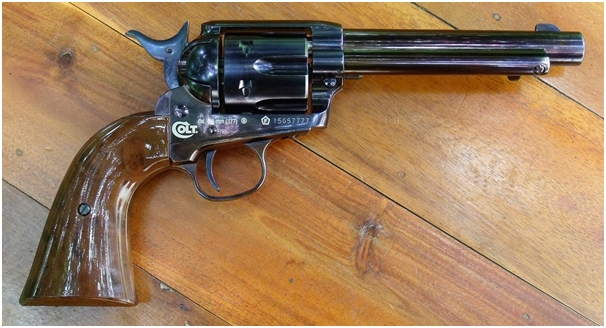
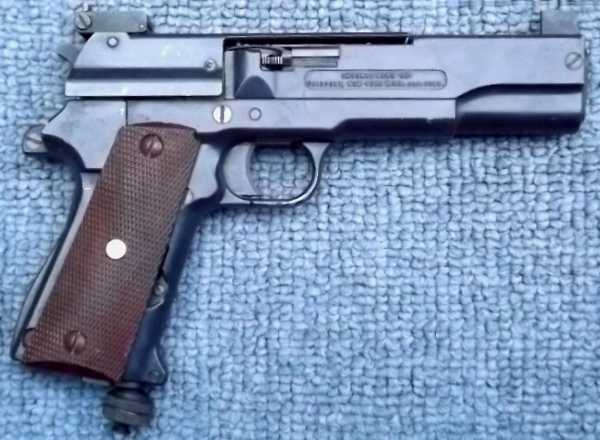
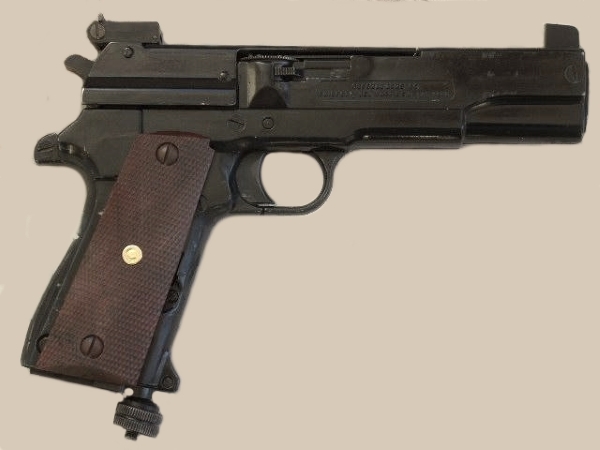
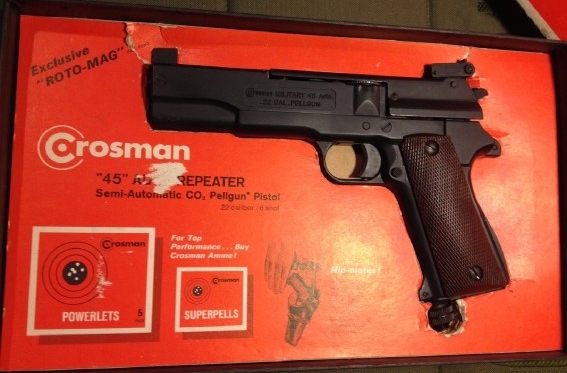
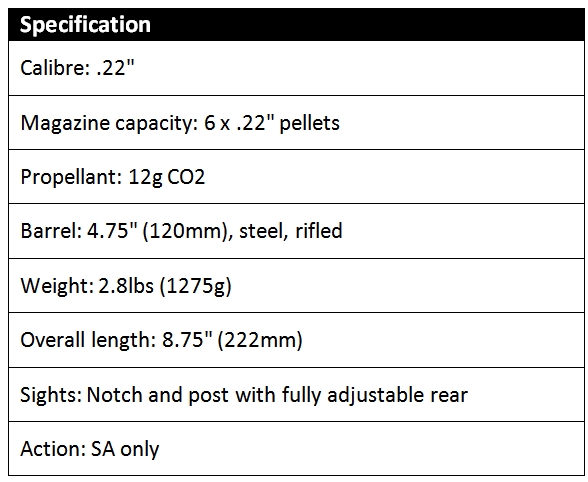
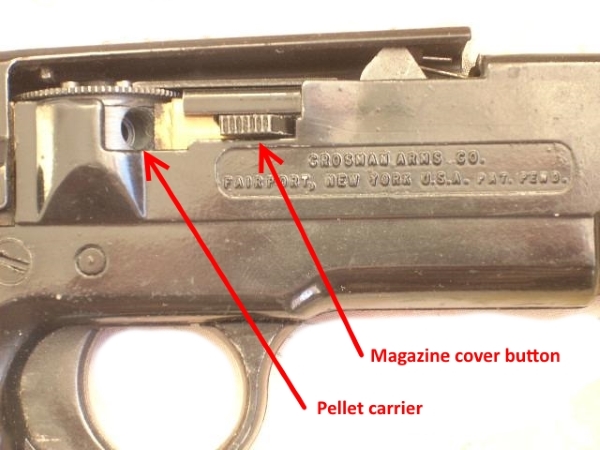
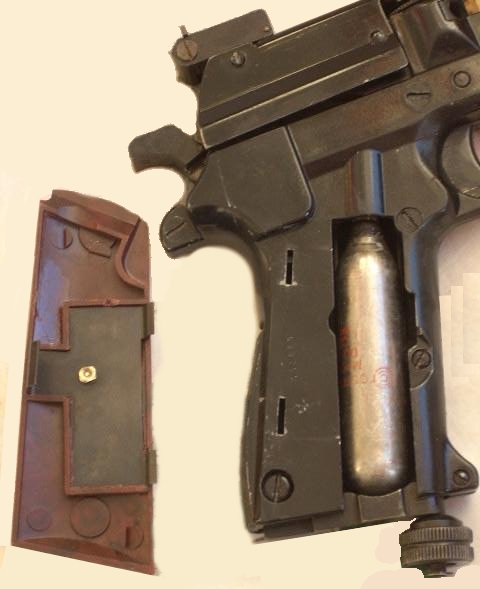
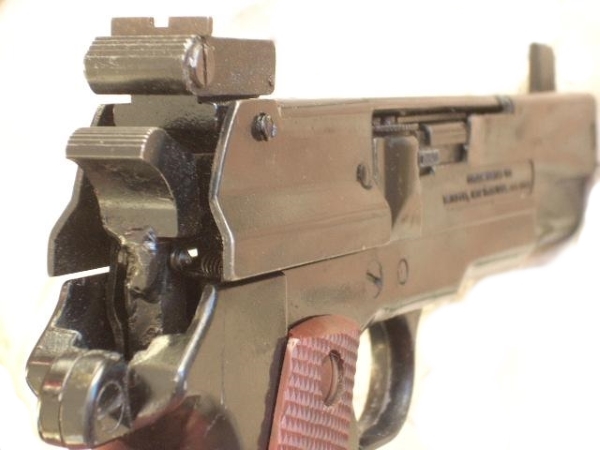
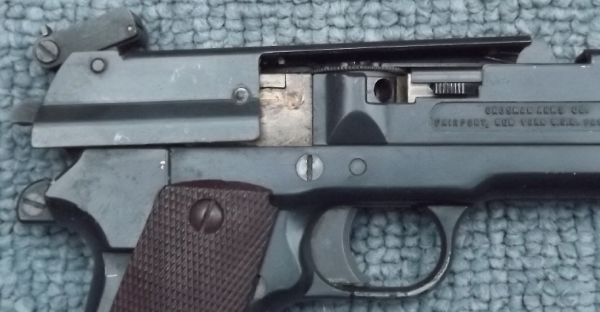
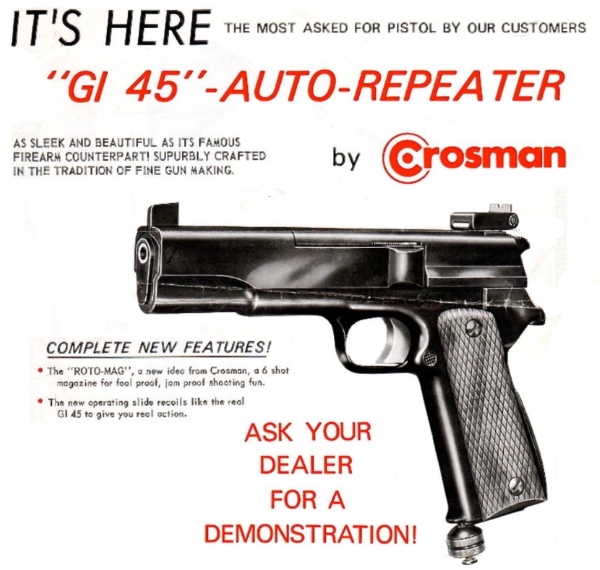
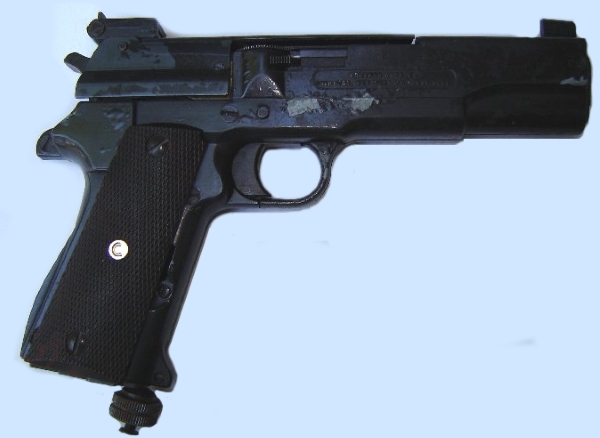

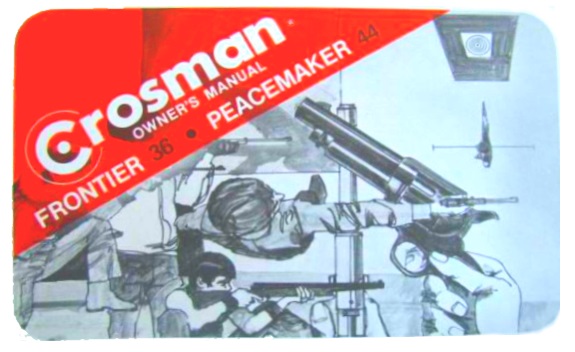
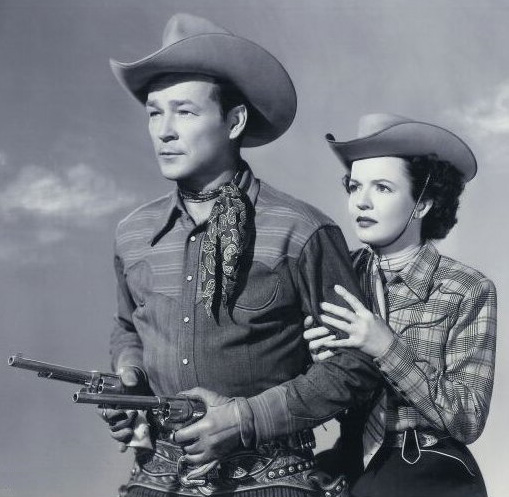
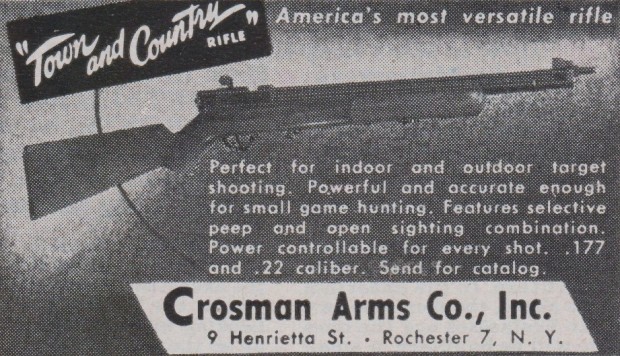
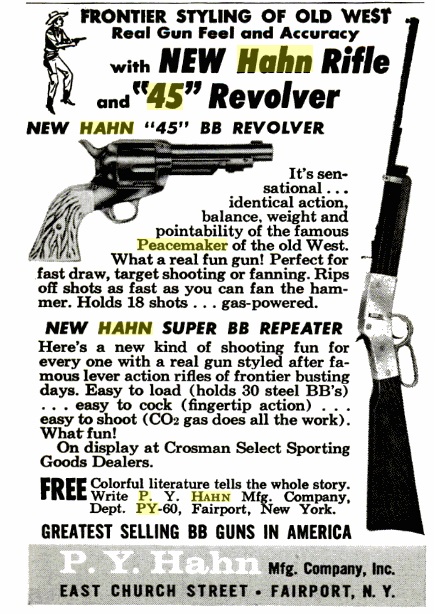
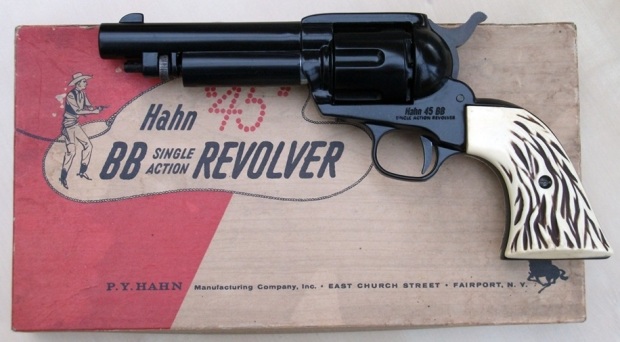
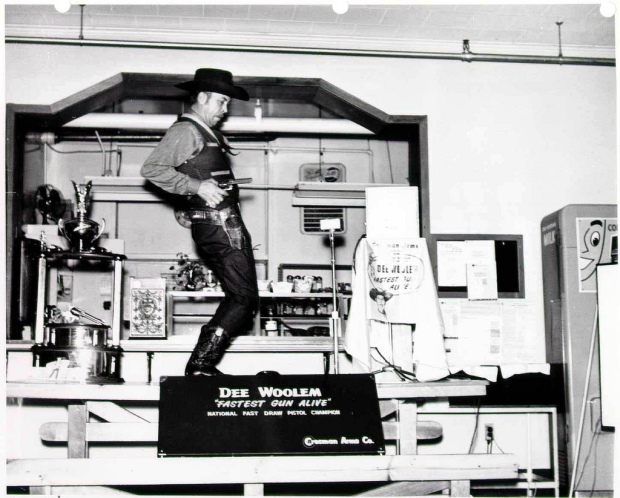
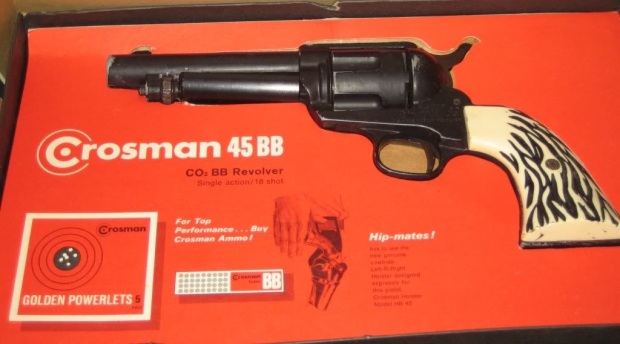
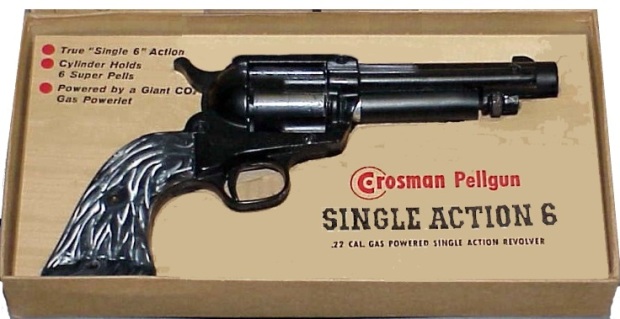
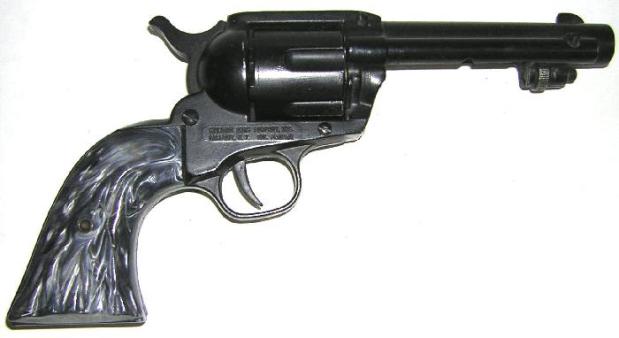 Crosman Peacemaker 44 .22″ (1970 – 1976)
Crosman Peacemaker 44 .22″ (1970 – 1976)